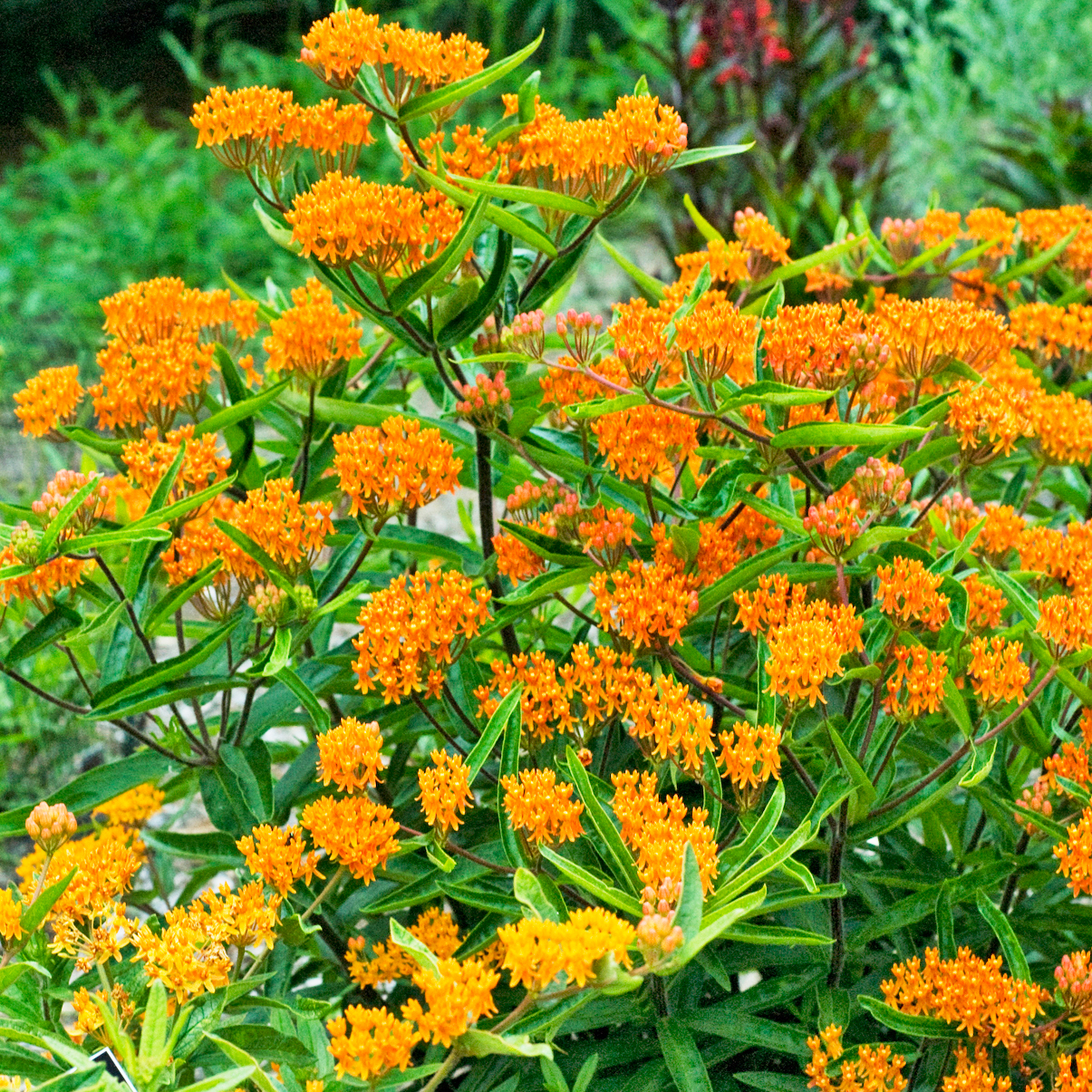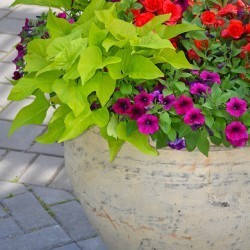Dancing Butterflies
In the middle of a summer’s day, butterfly weed, Asclepias tuberosa, is easy to find — just follow the butterflies.
True to its name, butterfly weed, also known as butterfly milkweed, is a butterfly magnet. Countless species, as well as ruby-throated hummingbirds and clearwing moths, pay regular visits to this plant. Hikers may see butterflies dancing in a cluster in the distance before discovering that the brilliant, almost fluorescent orange flowers of butterfly weed are the source of all the excitement. The upright flower clusters (called umbels — think “umbrella”) offer an irresistible delight to butterflies, which sometimes allow people to sneak within inches as they gorge on nectar.
While butterfly weed nectar feeds the adults of many butterfly species, including hairstreaks, the plant has a special relationship with the monarch butterfly. Adult monarchs will lay their eggs only on the leaves of milkweeds, which include butterfly weed and as many as 16 other milkweed species. As the young larvae emerge from the eggs, they immediately begin to feed. By eating milkweed leaves, the caterpillars ingest a chemical toxin known as cardenolide, a substance distasteful and potentially harmful to birds and other predators. This “deadly diet” provides an effective defense with apparently no negative effect on the caterpillars.
Butterfly weed likes to be “high and dry,” growing in elevated prairies, slopes, and uplands. It can settle onto bluffs, embankments, disturbed roadsides, and abandoned sandy fields. But it really proliferates in open, sunny prairies and oak savannas. Out on the prairies, butterfly weed hits its prime in July and into August, alongside grasses such as sideoats grama, little bluestem, and big bluestem (before that grass has overtowered Asclepias’ modest two or three feet). Butterfly weed flowers disappear by mid-August, replaced by distinctive, slender seedpods. Though the butterflies have mostly gone away, one might consider these pods “child magnets,” since children can’t resist teasing out the silky seeds and sending them floating on the wind.
Unlike all other species of milkweed, which release a milky latex sap that has earned them their collective common name, a clear, watery liquid circulates through the leaves of butterfly weed. The prominent, no-nonsense orange blooms stand out from the subtler shades of other milkweeds. This makes Asclepias tuberosa a popular plant for native gardeners, especially those who want butterfly visitors.
On your summer walks, look out over the tops of the grasses. Perhaps you will catch the sight of butterflies dancing.




